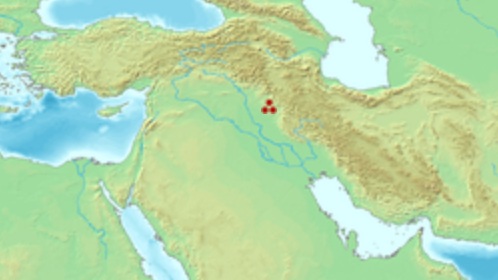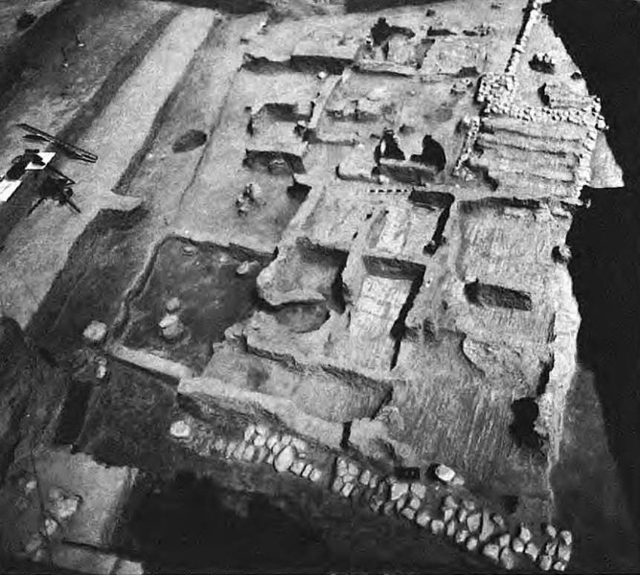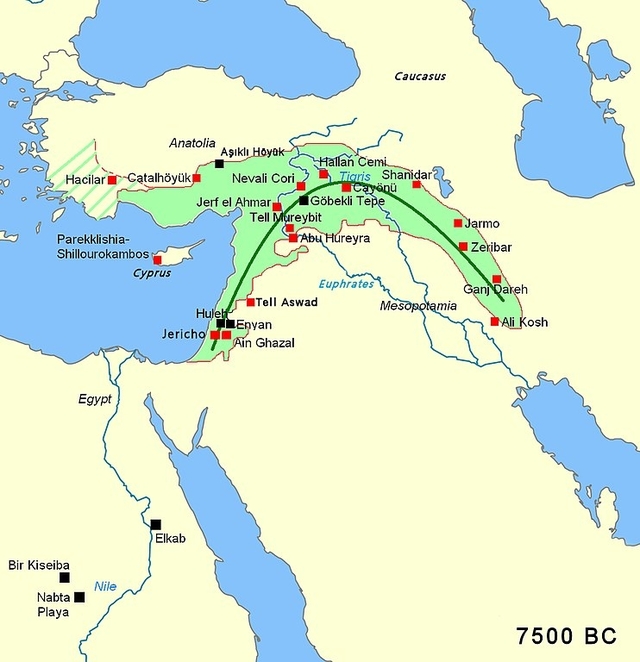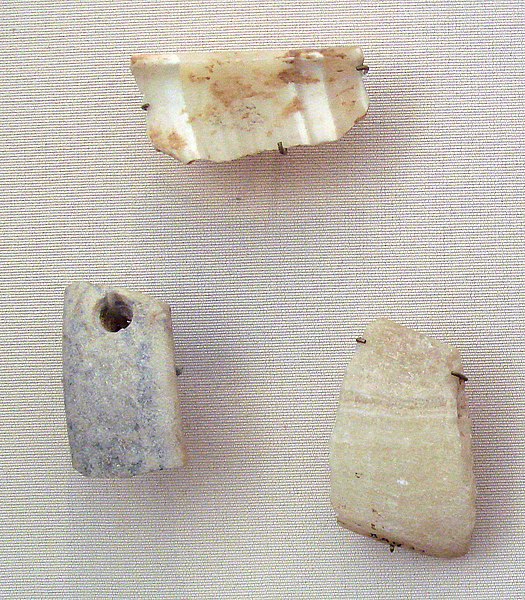
| JARMO
Jarmo shown Near East
The Neolithic village of Jarmo in Iraq, 1954 Alternative name : Charmo
Location : Chamchamal, Iraqi Kurdistan
Region : Mesopotamia
Coordinates : 35°32'56 N 44°57'1 E
Type : Settlement
Area : 12,000 to 16,000 m2 (170,000 sq ft)
History :
Founded : Approximately 7500 BC
Abandoned : Approximately 5000 BC
Periods : Neolithic
Management : Kurdistan Regional Government
Jarmo (Qal'at Jarmo) (Kurdish: Çermo) is a prehistoric archeological site located in modern Iraq on the foothills of the Zagros Mountains. It lies at an altitude of 800 m above sea-level in a belt of oak and pistachio woodlands in the Adhaim River watershed. Excavations revealed that Jarmo was an agricultural community dating back to 7090 BC. It was broadly contemporary with such other important Neolithic sites such as Jericho in the southern Levant and Çatal Hüyük in Anatolia.
Discovery
and excavation :
Jarmo, the village :
Personal adornments from Jarmo – University of Chicago Oriental Institute
Area of the fertile crescent, circa 7500 BC, with main sites. Jarmo is one of the important sites of the Pre-Pottery Neolithic period. The area of Mesopotamia proper was not yet settled by humans The excavations exposed a small village, covering an area of 12,000 to 16,000 m², and which has been dated (by carbon-14) to 7090 BC, for the oldest levels, to 4950 BC for the most recent. The entire site consists of twelve levels. Jarmo appears to be two older, permanent Neolithic settlements and, approximately, contemporary with Jericho or the Neolithic stage of Shanidar. The high point is likely to have been between 6,200 and 5,800 BC. This small village consisted of some twenty five houses, with adobe walls and sun-dried mud roofs, which rested on stone foundations, with a simple floor plan dug from the earth. These dwellings were frequently repaired or rebuilt. In all, about 150 people lived in the village, which was clearly a permanent settlement. In the earlier phases there is a preponderance of objects made from stone, silex—using older styles—and obsidian. The use of this latter material, obtained from the area of Lake Van, 200 miles away, suggests that some form of organized trade already existed, as does the presence of ornamental shells from the Persian Gulf. In the oldest level baskets have been found, waterproofed with pitch, which is readily available in the area.
Agriculture
and cattle farming :
Pottery
and religion :
Gallery :
Jarmo, March 2021. Remains of the 1948 - 1955 excavations conducted by the Oriental Institute of the University of Chicago
Jarmo, March 2021, recent excavations by a Japanese team were conducted on the previous excavations carried out by the Oriental Institute between 1948 - 1955
Jarmo, March 2021. Remains of the 1948 - 1955 excavations conducted by the Oriental Institute
Fragments of alabaster jars, Jarmo circa 7500 BC, before the 7000 BC invention of pottery. Louvre Museum
Source :
https://en.wikipedia.org/ |




,_late_8th_century_BCE_to_late_6th_century_BCE._Sulaymaniyah,_Iraq,_March_2021._Aftermaths_of_1948-1955_excavations_conducted_by_the_Oriental_In.jpg)
,_late_8th_century_BCE_to_late_6th_century_BCE._Sulaymaniyah,_Iraq._Recent_excavations_by_a_Japanese_team_were_conducted_on_the_previous_excavat.jpg)
,_late_8th_century_BCE_to_late_6th_century_BCE._Sulaymaniyah,_Iraq,_March_2021._Aftermaths_of_1948-1955_excavations_conducted_by_the_Orienta%20(1).jpg)
